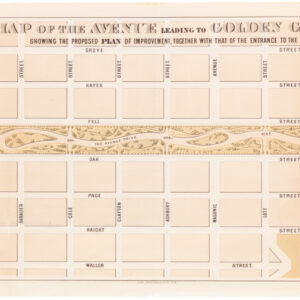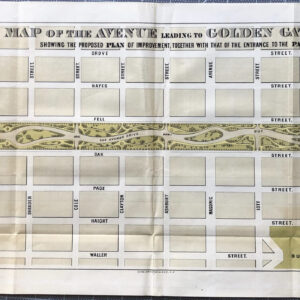William Hammond Hall (1846 in Hagerstown, Maryland, United States of America – 1934) was a civil engineer who was the first State Engineer of California, and designed Golden Gate Park in San Francisco, CA.
After serving with the U.S. army engineers in the Civil War, Hall was assigned in the latter part of the 1860s to surveying the Western regions of the United States and preparing topographical maps.
During this same time, the citizens of San Francisco were considering building a grand park for their new and growing city. The city designated a tract of 1,013 acres (4.10 km2) stretching out to the ocean that was known as the “outside land.” In 1870 the Park Commission solicited bids for a topographical survey which was awarded to Hall. After the successful completion of that task, he was appointed Golden Gate Park’s first superintendent in 1871.
Hall devised a plan to improve the Park. The design included a Panhandle along with two main drives. Additionally, the outside land was covered with sand dunes which needed to be reclaimed and replaced by forest trees. 60,000 trees had been planted by 1875 (Blue Gum Eucalyptus, Monterey pine and Monterey cypress). Plantings continued and there were 155,000 trees planted by 1879.
In 1876, Hall was elected a member of the California Academy of Sciences, and was appointed California’s first State Engineer. Despite his new responsibilities, he retained the position of consulting engineer to Golden Gate Park until he resigned in 1890, and was replaced by his assistant John McLaren.
Archived
- Out of Stock
- San Francisco
Map of the Avenue leading to Golden Gate Park Showing the Proposed Plan of Improvement, Together with that of the Entrance to the Park
- 1872 William Hammond Hall map of the Panhandle.
- Read moreQuick View
-
- Out of Stock
- San Francisco
Map of the avenue leading to Golden Gate Park showing the proposed plan of improvement, together with that of the entrance to the park
- Golden Gate Park takes shape: 1872 map of the Panhandle by William Hammond Hall.
- Read moreQuick View
-

